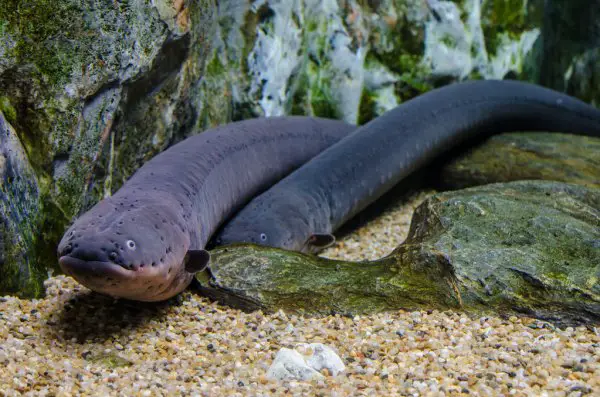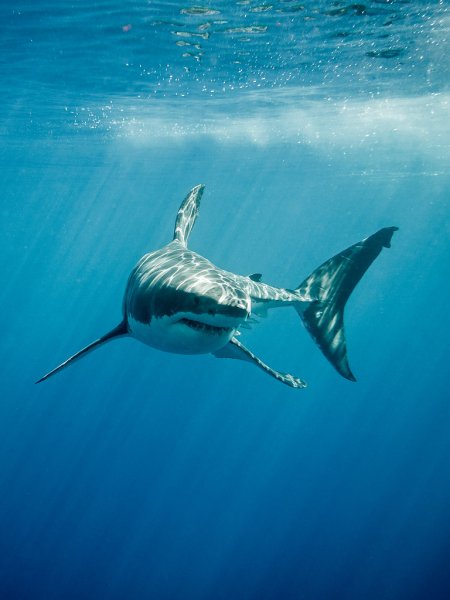At first glance, fish seem to all swim in more or less the same manner. They all whip their body laterally and use their tail fin to move forwards and backward… Right? Well, not quite!
Fish actually use five different swimming strategies when moving forward – but what about backward? Can fish swim backwards? And if so, how do they manage this feat? As it turns out, the closer we examine the fish world, the more secrets there are to find!
How Do Fish Swim?
Swimming is actually a very complex task that different fish accomplish in different ways! It involves not only fin movement and placement but how fish direct their bodies relative to the water. Fish use their caudal, pectoral, dorsal, and anal fins in different ways as well.
In fact, there are five types of swimming styles used by fish to swim forward and backward!
The first is anguilliform locomotion, and if you know a little about scientific names, then you might pick up that it’s referencing eels.
Anguilliform swimming involves whipping the entire body sideways, often including the head, in a sinuous, wave-like motion. Eels are the most common example in the world, but hagfish and lampreys are other fish that use this method.
Subcarangiform swimming is different, with the majority of bodily motion concentrated in the rear of the fish. Trout and salmon are fish that uses this style of swimming.
Carangiform swimmers take this one step further, concentrating the majority of their swimming motions in the caudal fin (tail fin) and surrounding muscles. It is very similar to the fourth type, known as thunniform swimming.
Except thunniform swimmers concentrate on side to side lateral motions and are champion distance swimmers. Tuna, swordfish, and sharks are examples of thunniform swimming fish. And their ability to create explosive power and speed by doing so makes them favorites of fishermen!
Finally, we have ostraciiform swimming, employed exclusively by boxfish (family Ostraciidae). These fish are entirely inflexible because they have fused bony plates that prevent their bodies from flexing like other fish.
They instead maneuver using their pectoral fins along with their dorsal and anal fins to propel themselves slowly through the water. What boxfish lack in speed they make up for in defensive capabilities!
How Do Fish Swim Backward?
Which Fish Can Swim Backward?
Nearly all fish backward swim if necessary. Usually, this means that they need to navigate some obstacle or escape the attention of a predator. But some of the best backward swimming fish are electric fish, including species like the Black Ghost Knife Fish and Electric Eel!
As you can see in the example video above, Black Ghost Knifefish swim backward better than most fish thanks to their extremely long, undulating anal fin, paired with their fan-like pectoral fins.
In most electric fish, it’s merged entirely with the caudal fin into one sinuous fin running along the belly and tail. Electric fish species move by undulating this fused anal and tail fin to maintain speeds similar to other fish with excellent maneuverability.

Electric fish are found in rivers where loads of silt and sediment make it impossible to see well. Others are nocturnal as well and feed mostly at night. Since their sense of sight is of limited to no use, they’ve evolved specialized body and tail muscles that create electrical currents.
Since these muscles have a secondary function and can’t be used to move the tail from side to side so easily, electric fish have to use alternative means of swimming.
But the key advantage these fishes have is the ability to find prey and navigate in complete darkness! Most are predators and are capable of sensing small animals that they run into thanks to their electric senses.
They can also find direction underwater and use their electrical field in avoiding predators.
What Fish Can’t Swim Backward?
The vast majority of fish can swim backwards if they need to, though not always quickly or very well. The only fish that can’t swim backwards at all are sharks! While it sounds like a strange oversight, there are a few very good reasons why this is the case.
First, there is the fact that sharks have fairly inflexible pectoral fins that can’t curve upwards or engage in the wide range of motion that bony fish perform when swimming backward.
If you watch an aquarium fish swimming backward, you’ll see it flex its pectoral fins, which sit on opposite sides of its body in a sweeping motion to propel itself in reverse.
Second, most (but not all) sharks have to keep moving forward in order to breathe! They engage in what’s called the ramjet principle because it’s almost identical to how an airplane jet engine works!
Sharks rely on moving forward through the water, forcing water over their gills, which gives them more energy to continue moving. Other fish have to open and close their mouths to force water over their gills but not sharks.

This ramjet principle means that if a shark were to swim backwards, then it would start to suffocate from lack of oxygen! Water is no longer flowing over its gills.
So sharks that use this style of breathing, including the Great White and Whale Shark, have no ability to swim backwards at all.
However, this is never a problem because these sharks live exclusively in the open ocean, where there are never any obstacles that require them to swim backward.
Sharks that live along the bottom, such as Wobbegongs and Cat Sharks, still aren’t very good at backward swimming. But they do have the ability to pull water through their mouth and gills as other fish do.
Do Fish Swim Against the Current?
Fish swim against the current regularly when searching for food. But tuna, marlin, and other thunniform swimmers tend to move with the current to conserve energy as they migrate across vast distances of the open sea.
When moving against the current, the head of fishes is shaped to allow them to minimize drag from water moving in the opposite direction. Sharks also breathe in such a way that they actually benefit from swimming against the current!
Since they use ramjet swimming, swimming against the current means, they are exchanging even more oxygen and carbon dioxide than normal.
And while their pectoral fins don’t allow them to swim backward very well, they do allow them to glide and cut through a current similar to a jet aircraft in the atmosphere. With a moderate current, a shark can swim endlessly, migrating across the ocean to find food to eat, new habitats, or mates.
So, Can Fish Swim Backwards?
As you’ve come to discover, swimming backward is a complex task that not all fish can reliably do! Bony fish are the best backward swimmers, while sharks are the worst since ramjet breathers have to swim forward for oxygen.
Unless you’re on a boat or visiting a public aquarium, you might not get much of a chance to study sharks, tuna, squid, an Electric Eel, or other exotic life.
So the next time your Molly or Tetra swims backward, take a moment to study how its fins and form shift to make the movement possible! There is a lot more going on when moving in reverse than you might guess!
Related FAQ:


